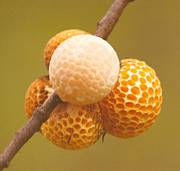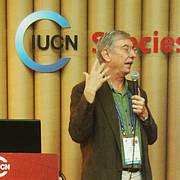Lest we forget: Waving the fungi flag
08 September 2012 | Article
Plants and animals have captured the attention of many conservationists for decades. This same attention is yet to be extended to the usually overlooked but an extremely important group - fungi. The Global Fungal Red List Initiative intends to turn the tide on this scenario and draw people's attention to the plight faced by this unique kingdom.
An 18 month-long programme has been initiated by the Global Fungal Red List Initiative to increase awareness and add to the number of fungal species evaluated and submitted for inclusion in the IUCN Global Red List of Threatened Species.
Fungi are not plants, they live everywhere and are heterotrophs (feed by absorption). Some may look unappealing to the human eye but all are extremely crucial components of nature through their role as nutrient recyclers, decomposers, symbionts and many others. Besides this, fungi are an important part of our lives - found in the food we eat and essential for the production of everyday products such as penicillin, beer and soy sauce.
"The aim is to show to the world that fungi are in need of conservation and they need to be part of the broader conservation agenda," says Gregory Mueller, Vice President of Science and Academic Programmes at Chicago Botanic Garden.
The 2012 IUCN World Conservation Congress is special to the Global Fungal Red List Initiative and to all fungi lovers because for the first time in IUCN's history, there will be a motion explicitly and exclusively devoted to fungi.
In spite of their critical importance, so far less than 10% of the world's estimated species of fungi have been scientifically described. Only one mushroom and two lichenized fungi are included among the 19,817 animal, plant and fungal species listed in the 2012 update of the IUCN Red List of Threatened Species.TM
According to Mueller, little has been done to assess the status of fungi because they have usually been considered difficult to study and there is limited awareness generally.
"One of our big challenges is to figure out how to bring information on fungi to countries because they are important ecologically and as an important food source," adds Mueller. "This new initiative marks a begining for the mycological community and IUCN to build on results and move fungal conservation forward".
The Global Fungal Red List Initiative is a joint venture of all five IUCN Species Survival Commission fungal specialist groups (Chytrid, Zygomycete, Downy Mildew and Slime Moulds, Cup-fungus, Truffle and Allies, Lichen, Mushroom, Bracket and Puffball and Rust and Smuts) and is supported by the IUCN Species Programme.




